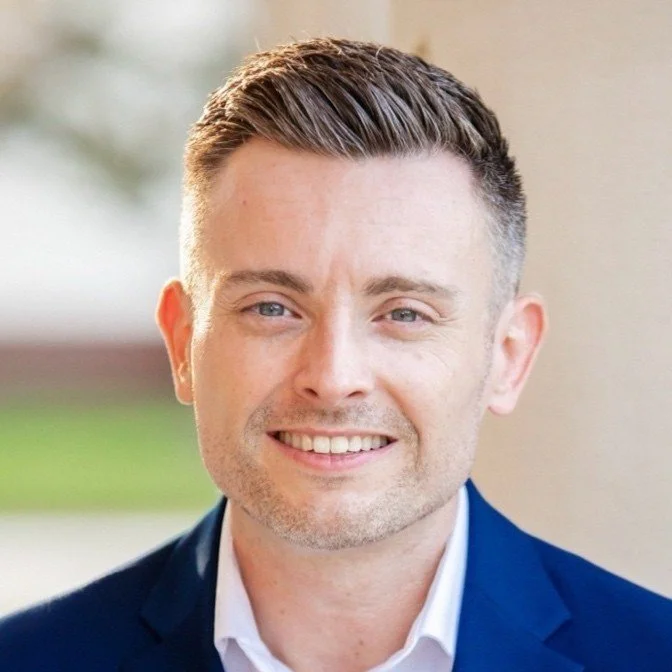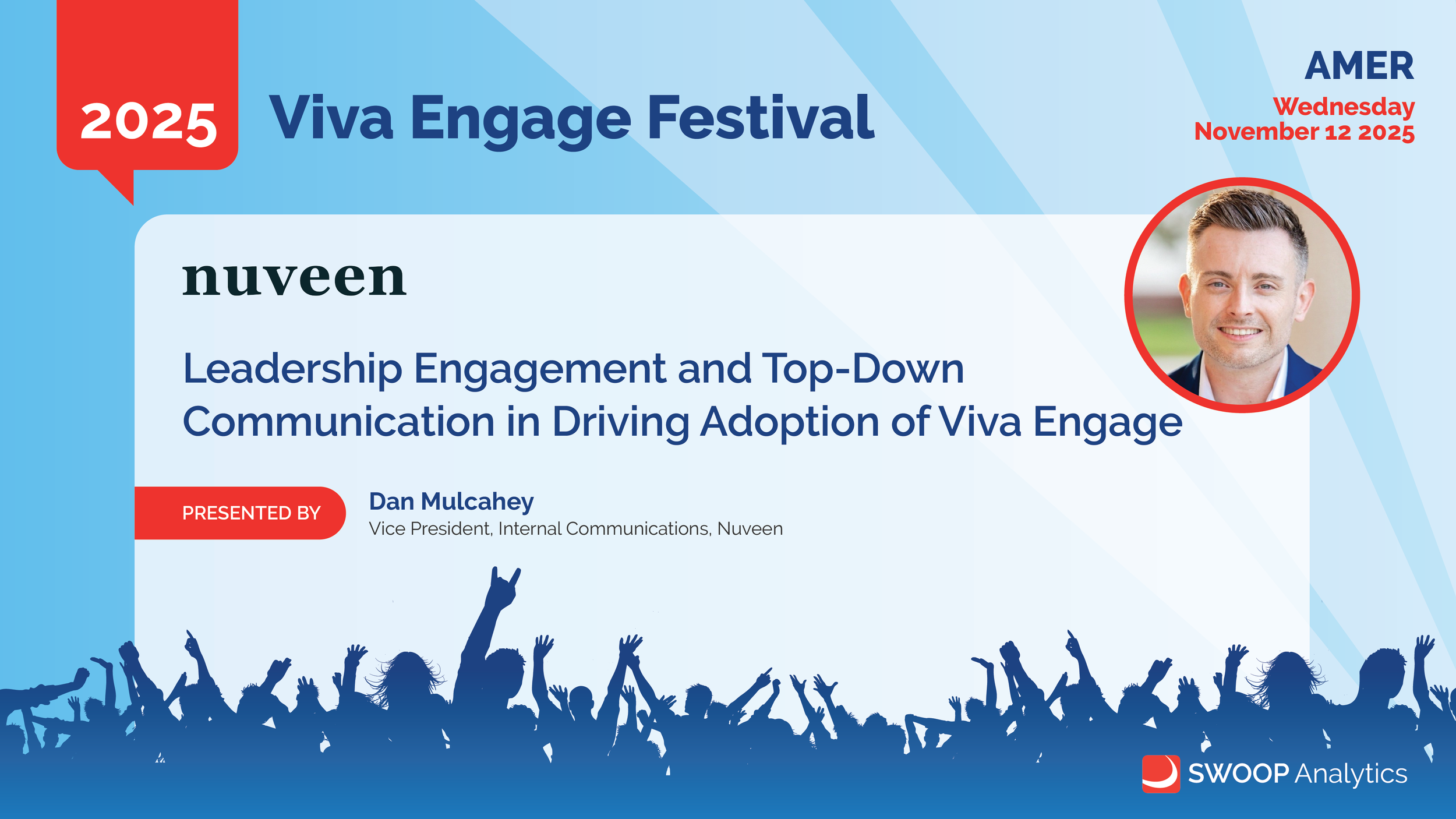Leadership engagement and top-down communication in driving adoption of Viva Engage.
What this session was about
Dan shared how Nuveen used senior leadership engagement as the accelerant for Viva Engage adoption. Instead of trying to nudge the org from the bottom up, they started where influence already sits, at the top, and built a confident, leader-led approach.
-
Key Messages
Leadership behaviour sets the tone for the entire platform. When senior leaders show up regularly, employees follow, and fast.
Visibility from the C-suite normalises usage. If execs are commenting, posting, reacting and showing up informally, the organisation feels safe to do the same.
They used storytelling, not “launch comms”, to bring the platform to life. Senior leaders shared updates, reflections and personal experiences to create familiarity with Engage.
Top-down adoption doesn’t mean one-way communication. Leaders were encouraged to ask questions, invite feedback and respond, modelling two-way behaviour.
Practical examples helped employees see the point. Dan showed real Nuveen leadership posts, making the case for why Viva Engage matters more effectively than any slide deck.
Confidence comes from practice, not perfection. Leaders were supported, trained and gently pushed until Engage became a natural part of their communication rhythm.
Leadership involvement accelerated overall adoption. The org began engaging faster because the people “at the top” made it normal and acceptable.
What you can take from this
Adoption moves faster when leaders model the behaviour early.
Storytelling beats tool training every time.
Visibility from the top reduces fear throughout the organisation.
You can’t expect staff to engage if leaders don’t.
Confidence grows with repetition, not perfection.
Meet the speaker:
Dan Mulcahey
Vice President, Internal Communications






